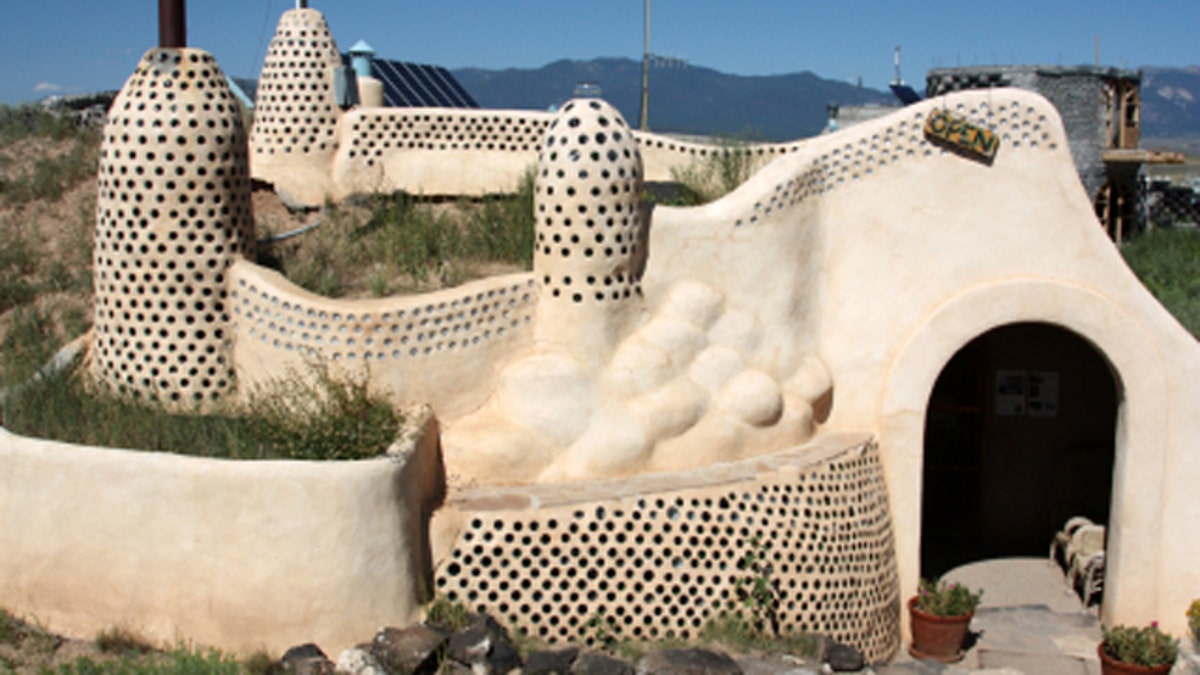
Earthship
Imagine a home that heats and cools itself without the need of a furnace or AC unit; one that produces its own zero emission supply of electricity, and is not dependant on a municipal source for water. This kind of home also processes all of its wastewater locally, and can even grow a quantity of its occupant’s food. Additionally the home is built with local and recycled waste products, and it can be built with basic low-tech labor. Does this sound like the ideal home of a space age future? Believe it or not, these homes exist today (many have been built by builders in New Mexico) and have been in existence for over 30 years. This type of home is called an “Earthship” and it exhibits all of these features and more.
Heat and Cooling Naturally
Earthships are homes built with passive solar design principles. During the cool winter months, low angled sunlight enters the home and warms the floors and walls. Exterior and load bearing walls are constructed from a “core” of up-cycled tires and rammed earth. This high thermal mass core is covered with concrete or earthen-based plasters for a smooth and cosmetically appealing surface. The mass of the walls and structure “absorb” the sun’s heat, this heat is stored in the mass walls and is then released back into the living space after the sun sets. In summer the cool base temperature of the earth around the home provides natural cooling. This is supplemented with convective air flow and skylight vents.
Power and Water
Earthships by their nature are off grid. This means they are self sufficient in terms of electricity and traditional service utilities. Solar panels and/or wind turbines generate electric power. The home's roof surface acts as a “collector” for rain and snow harvesting. Water consumption is further enhanced by re-use. An Earthship’s water stores are “processed” by filtration and purification means for initial use. Grey water from sinks and showers are then processed through a biological/planter bed before being used to flush conventional toilets. These planter beds can also be used as gardens (some people grow food in grey water-irrigated gardens; some do not). The waste water from the toilets is then processed in an exterior system that can be used for exterior landscape needs. With this system the water is actually used four times…which is a great savings in its own rite. Hot water for domestic use is produced using thermal solar power.
Recycled Building Materials
One of the greatest advantages of Earthship construction is the use of reclaimed materials. The fundamental “building blocks” of an Earthship include tires, bottles and cans. Earthship “foundations” begin with old tires that are filled with simple dirt. This local material is compressed into the “form” of the tire and provides a strong solid and dense “brick”. These tire walls are built on three sides of the structure and provide both thermal mass and support for the home roofing system. Interior and decorative walls are often built using bottles and cans as the “core” materials. This integrated “matrix” of concrete and containers reduce the total amount of mortar that is needed and can provide a great decorative element.
Earthships are gaining in popularity and can be found in nearly every climate type. One of the best known examples of this type of architecture and sustainable building style can be found near Taos, NM. Here an entire community of Earthships make up the “Greater World Community”. This “subdivision” has been in existence for nearly 20 years.